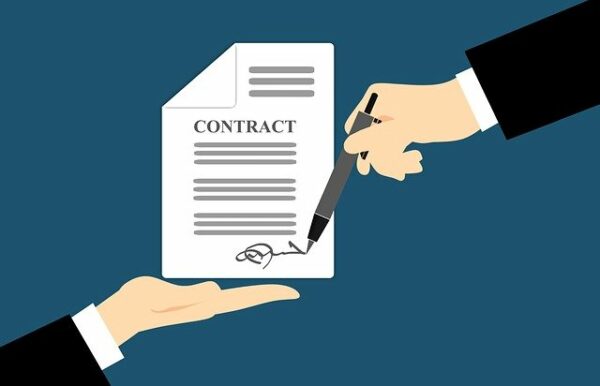I’ve precepted many pharmacy students who are preparing to enter the match for a pharmacy residency position. Next to preparing for various pharmacy board exams, trying to get a pharmacy residency can be one of the most anxiety-stoking events in a young pharmacist’s career. Tony Guerra is a good friend of mine and cares deeply about this topic. He’s shared some insight on what to do if you don’t match for a pharmacy residency.
If you are part of the 1400 or so pharmacy students who never received an interview, the advice is a lot more straightforward. If you are part of the 2600 pharmacy students who found that they didn’t match with a residency on match day, there is a little more to dive through.
If you never earned an interview.
The two most likely reasons you never earned an interview come from recommendations and documents.
1. Recommendations
About 80% of the students who apply for a residency will earn at least a single interview. While the number varies greatly depending on the applicant’s College of Pharmacy, the reason is often the same. About 90% of recommendations carry the “Highly Recommend” seal of approval. However, you submitted three recommendations, that 10% chance of a poor recommendation happens three times. Often a single recommendation that raises the red flag is enough to sink a residency application.
I have so many questions for a recommender who can’t simply tell the applicant that they would not write a highly positive review, but unfortunately, those conversations often don’t happen, and the applicant suffers. The key is to find which recommendation or recommendations kept you from earning an interview and move on to Phase II with everyone on board with a highly recommend.
2. Documents
A poor letter of intent (LOI) does not just come from poor grammar or syntax, but that the document didn’t provide evidence of an applicant–site match. Half of the letter of intent should talk about the applicant’s abilities in around three of the Big 5:
- 1) Clinical
- 2) Research
- 3) Teaching
- 4) Leadership
- 5) Service
This part most applicants complete. The other half provides evidence that the applicant matches by having work and APPE experience in areas that are a core and elective part of the residency. In many generic LOIs, this half is completely absent from the letter. Without the “why I match you” part of the letter, the application fails.
If you want one-on-one help with a 24-hour turnaround, you can contact Tony Guerra at the Pharmacy Residency Podcast Courses here: https://residency.teachable.com/p/phase2 or contact him at [email protected]
If you earned interviews but didn’t match.
After the interview, there is always a bit of awkwardness as you don’t get your result until weeks or months later. Everyone seemed to like you, you felt good about your presentation, but somehow, you didn’t match a program. What happened?
Every year, many applicants don’t match. There are some 4,000 choices, and you hoped that the 12 or 18 you chose got you the interviews you wanted. You could have been the very next applicant on the ranking list, and it was just bad luck that someone was ahead of you and ranked the site you wanted as well.
1. Take a Step Back
Currently, there are opportunities in the market, even for non-residency trained students, to work toward a clinical position. The importance of knowing you will have a job at the end of school is more to provide perspective for you to give it a shot in Phase II. Take matchday off from the match, then come back the next day ready to get your Phase II applications going.
2. Review and Revise your Letter of Intent
While it might have been easier to use a template that you found online and pop the name of the hospital in there, what you didn’t get a chance to do was feel whether you felt like it was indeed a match or not. FIX. When you took the time to compare your APPEs to their residency offerings and their lifestyle, it was their alignment. For whatever reason, as soon as you re-read the letter of intent and try to match it against a site where you earned a rejection, you start to see that there were areas that maybe you didn’t have excellent alignment. Creating a letter of intent that matches their offerings is the key to matching in Phase II. Put your CV side-by-side with the Phase II residency curriculum web page on your top Choice for Phase II.
3. Advice for Phase II
If you didn’t match, you get another try. If you didn’t apply or even withdrew in Phase I, you can go for it in Phase II. Phase II is very different in that you can start contacting programs right away on the list and see if they are interested in you. This single step can remove half the programs you might have applied to.
By then expanding your net a bit, leaning into your network from college and preceptors, you can get an idea of which sites you’ll still have a great shot at. Are there still academic medical centers in Phase 2? Yes. Can students match with one? Yes. There are great residencies in Phase II because they only ranked those they wanted to match with. They, like you, wouldn’t compromise to have a residency or resident.
Here in the Phase 2 course from the Pharmacy Residency Podcast, you can find a couple of free resources, including an e-mail template and a clinical pharmacy residency position template to help you whether you are trying to contact a residency or earn a clinical position.
You can also listen to a one-hour audiobook about Crushing Phase 2 and earning a residency placement if you want some general advice.
Tony Guerra, PharmD



0 Comments